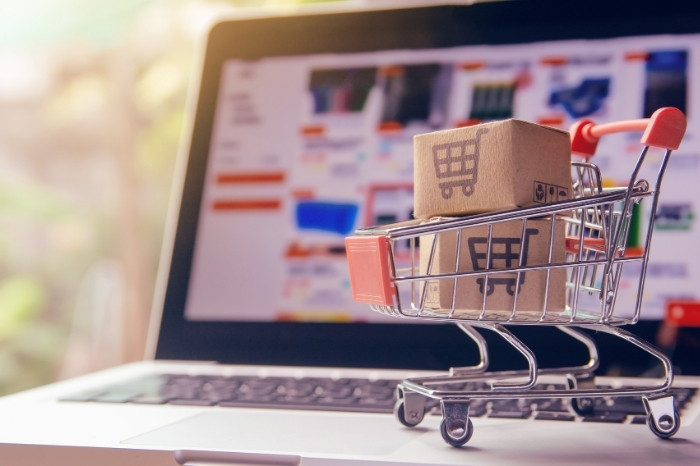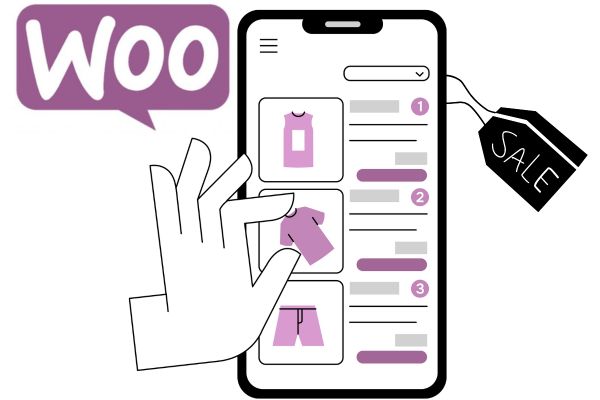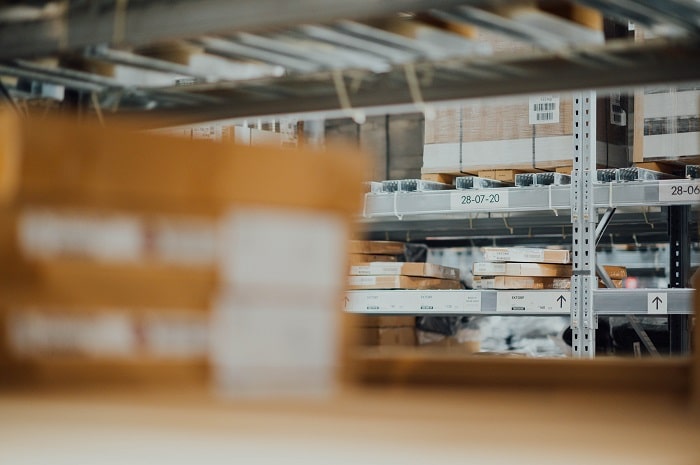Want to start a profitable print-on-demand clothing brand without spending a fortune? That’s how you can: with minimal investment, huge scalability, and a market that’s growing fast, there’s never been a better time to jump in.
A print-on-demand business lets you sell custom designs without holding inventory. You create, promote, and sell – your supplier handles the rest. That means you can test ideas, adapt quickly, and grow at your own pace.
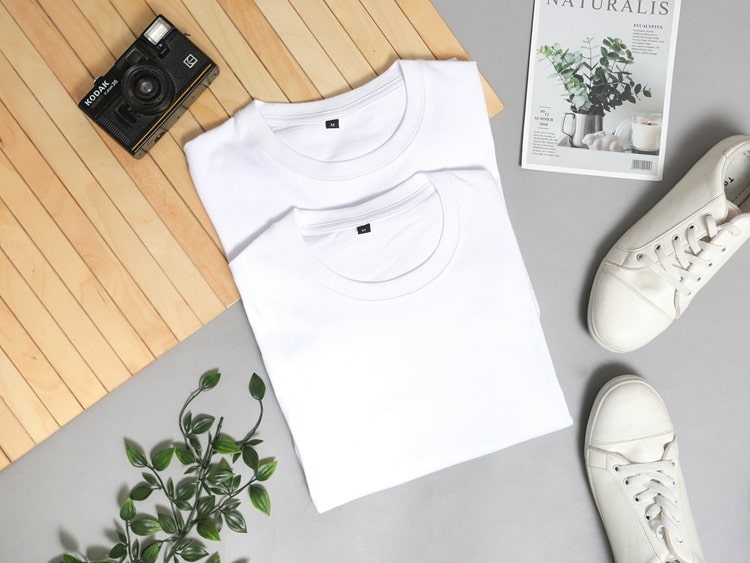
Whether you’re aiming to make money with print-on-demand clothing as a side hustle or turn it into a full-time personalized clothing brand, the opportunities are wide open. The demand for unique, made-to-order apparel is only getting stronger.
In this guide, you’ll learn how to launch smart, keep costs low, and scale without limits. Your designs deserve to be worn – let’s get them from your mind to the marketplace.
This page contains affiliate links. If you purchase through our links, we get a commission at no cost to you. Read the full disclosure here.
You may like: Easy Beginner-Friendly e-Commerce Platforms for Side Hustle in 2025
What’s a Print on Demand Business?
A print on demand business lets you sell custom products – like shirts, hoodies, and mugs – without holding inventory. You create designs, list them online, and your POD supplier prints and ships each item when someone orders. You only pay for products after you’ve made a sale. This means low upfront costs, less risk, and more freedom to experiment.
You can either sell on an online marketplace or your own self-hosted website or online store. It’s a flexible way to start small, work from anywhere, and grow at your own pace – whether it’s a side hustle or your next full-time gig.
Why Starting a Profitable Print-on-Demand Clothing Brand on a Budget Works
The print-on-demand clothing brand market is booming. In fact, the global POD industry was valued at over $10 billion in 2024 and is projected to grow more than 25% annually. That means more customers are looking for unique, made-to-order pieces – and you can be the one to sell them.
One big reason it works is the low overhead. With a budget-friendly POD apparel business, you don’t need to buy stock upfront or rent storage space. The POD provider only produces items after they’re already sold. That’s less risk and more cash to invest in marketing or new designs.
Personalization also gives you an edge. Shoppers love clothing that reflects their style, passions, or identity. With POD, you can create and test custom designs quickly. This flexibility helps you stand out while keeping your business lean and profitable.
You may like: Best Creative Business Ideas in 2025: Earn Money Online
How to Start a Print on Demand Business from Home
Starting a profitable print-on-demand clothing brand on a budget is more doable than you might think. You can build your entire print on demand business from home, in your free time, without massive upfront costs.
Today, you can use an AI website builder to create your store in minutes with WordPress.org. Then host it affordably with a provider like DreamHost. Add WooCommerce, a free WordPress plugin, and you’re ready to sell. DreamHost’s optimized plan for WooCommerce stores starts at $16.95/month. For that price, you also get the AI Website Builder tool – so you can get your store live today with free professional templates and a drag-and-drop editor. To make it even more affordable, DreamHost gives you a free domain name and unlimited emails @ your domain.
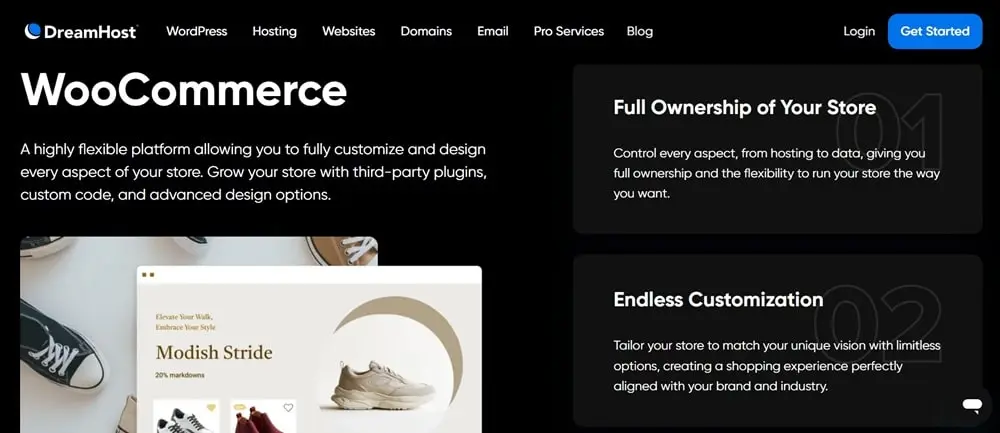
And that’s it. That’s all it costs to start your POD custom apparel printing business today.
For production, Printful is free to use – you only pay when you make a sale.
This setup means you can start as a side hustle and keep your day job until your sales are strong enough to go full-time.
Want proof that print on demand businesses work for real? Your wish is my command! Check this out ⬇️
Low-Cost Print-on-Demand Startup Real Case Study: UMAI Clothing’s Rise on Its Own Site
UMAI Clothing, founded by Ryan (joined later by artist Ivan), began as a print-on-demand clothing brand designed to test bold anime-inspired streetwear without inventory risk.
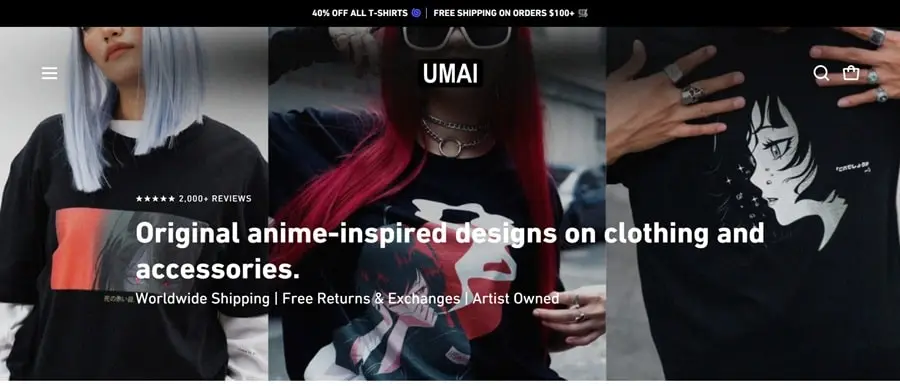
They launched and scaled their budget-friendly POD apparel business via their own site using a POD provider – no Etsy or marketplaces involved. Just a self-hosted online store + Printful.
- They started small, experimenting with designs.
- In just months, their monthly revenue jumped from about $20K to $100K.
- Their success came from smart design testing, low upfront cost, and growing audience loyalty.
According to Ryan, in an interview with Printful, UMAI saw 15-20% growth within two months after Ivan’s arrival:
Within two months of Ivan’s arrival, UMAI saw 15–20% growth, eventually leaping from $20K in monthly sales to around $100K. Ivan’s creative flair meshed perfectly with Ryan’s marketing know-how, proving that a solid partnership can transform a business overnight.
This case shows how a lean setup – your own website, POD fulfillment, and great design – can help you launch confidently from home and scale fast.
Your future business could be next. All you need is your idea, a little free time, and the drive to get started. Are you ready to get started? Yes? Wonderful! 👏🏻 Now, let me guide you on how to build a print on demand business step by step.
How to Start a Profitable Print-on-Demand Clothing Brand: Step-by-Step Setup Process
Ready to launch your profitable print-on-demand clothing brand from home? Here’s a simple, step-by-step setup process to get you started fast.
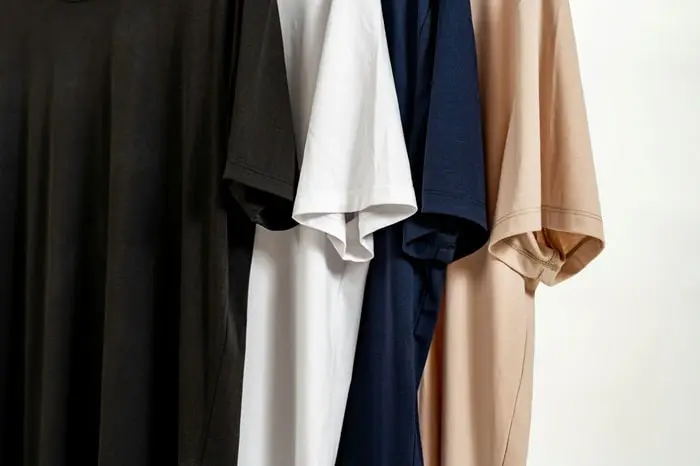
1. Create Your Designs
Pick a niche you love and start sketching ideas. You can use free tools like Canva or Photopea, or go pro with Adobe Illustrator. Keep your designs high-resolution (300 DPI) and use transparent backgrounds for clothing. Start with 5–10 designs – you can always add more later. The goal is to get something ready to test without overthinking perfection.
Another great idea is to buy illustrations, editable elements/fonts with transparent backgrounds, and designs on Creative Market. On Creative Market, you can buy the license to commercialize and make a profit with the artworks you buy – but that can get expensive.
So, as we’re focusing on starting a print-on-demand clothing brand on a budget today, this could be a smart plan for the future. Once you start profiting from your POD business, you’ll have more money to invest and make your online business grow even more. That being the case, buying art will be a productive decision to expand the products and designs your online POD store offers.
And you also will be legally – and financially – supporting other artists! 😉
2. Upload Your Designs to Printful
- Sign up at Printful and click “New Product”
- Choose an item, like a t-shirt or hoodie, and upload your design.
- Adjust placement, colors, and price.
Don’t stress – this part is quick. Once your design is ready, it usually takes under 10 minutes to create and publish a product.
3. Connect Printful to Your Online Shop
With Printful, you have lots of ways to sell – Shopify, Ecwid, Squarespace, and more. But since we’re focusing on a budget-friendly POD apparel business, we’ll keep it simple and focus on Etsy and WooCommerce. Both let you start small, work from home, and grow at your own pace.
Etsy
Selling through Etsy with Printful is mostly free. Etsy charges $0.20 per listing and a 6.5% transaction fee.
The perks? Huge audience, easy setup, and very low upfront cost. It’s also great for a side hustle and a side income with NOT that much commitment.
The downside? Tons of competition, limited branding, and you don’t fully own your customer list (which means you’ll have one-time customers but not loyal fans and repeat customers).
WooCommerce (WordPress Plugin)
WooCommerce itself is free. You only pay for hosting, starting at $16.95 with DreamHost, and connecting to Printful costs nothing.
Pros: full control, your own customers, scalable, and professional branding. It’s great to build a clothing brand with credibility, longevity, and scalability to a full-time online business. And you build an email list and nurture repeat customers. (Did you know repeat customers are more profitable than one-time shoppers?)
Cons: takes a bit more setup, but it’s worth it for serious growth.
How to Connect Printful to Etsy
- Open your Etsy shop.
- In Printful, go to Stores > Etsy.
- Approve the integration and select which products to push live.
- Done! Your designs are now listed and ready to sell.
How to Connect Printful to WooCommerce
- Install the free WooCommerce plugin on WordPress.
- In Printful, go to Stores > WooCommerce.
- Follow the guided steps to connect your store.
- Your products sync automatically – now you can start selling!
4. Test and Publish
If you’d like, order a sample to check the quality and take a few personalized pictures. If you don’t want to take your own personalized pictures, you can use Printful’s free mockups or browse through PlaceIt’s thousands of apparel mockups. Adjust your product titles, descriptions, and tags for SEO. Once everything looks good, hit publish and get ready to start promoting your store.
5. Keep Creating
Add new designs regularly to stay fresh and keep customers coming back. Many successful POD sellers upload a few new products each month. The more you experiment, the better you’ll understand what your audience loves.
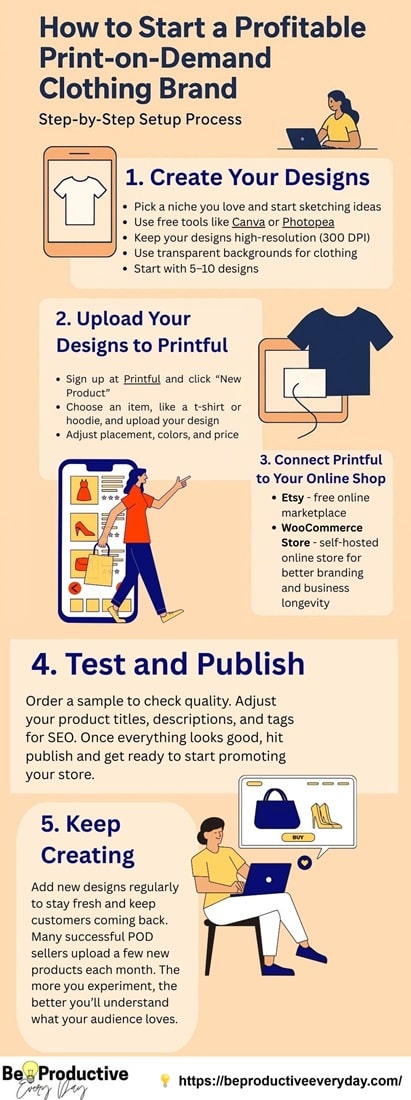
Tools on a Budget to Start a Print-on-Demand Clothing Brand That Makes Money
1. KWFinder
This keyword research tool is powerful yet simple. It helps you discover low-competition keywords so your print-on-demand clothing brand can rank faster. Smart SEO without the headache.
2. Google Keyword Planner
Totally free and super reliable, it shows real search volumes and trends. Essential for knowing what people are actually searching for before creating designs or product listings.
3. DreamHost + WooCommerce
DreamHost makes launching your store easy and affordable. They build your WooCommerce site for free, give you a free domain, and emails @ your domain name. Professional look, minimal cost. You only pay for hosting – starting at $16.95/month.
4. Canva
Create high-quality designs for free. Canva is perfect for beginners making mockups, social media posts, or apparel graphics. Quick, intuitive, and effective.
5. Photopea
A free Photoshop alternative in your browser. Great for editing transparent designs and preparing files for Printful. All the power, zero cost.
6. Printful
The ultimate POD partner. Free to start—pay only when you sell. Handles printing, packing, and shipping, so you can focus on growing your brand.
7. Buffer or Later
Free social media schedulers that let you plan posts for Instagram, TikTok, or Pinterest. Keep your audience engaged without spending hours every day online.
8. PlaceIt
Affordable, easy-to-use mockup generator with thousands of clothing item templates. Create professional, real-life model shots of your print-on-demand clothing brand in minutes – no photo shoots required. Perfect for giving your store and marketing a polished, high-quality look. And you get unlimited downloads with your monthly subscription!
Marketing Tips to Scale Profitability on Your Print-on-Demand Clothing Brand
The beauty of print-on-demand (POD) is that you can start lean, test ideas fast, and grow without massive upfront costs. But to turn your store into a profitable brand, you need a marketing plan that works smarter – not just harder. Here’s how to scale your reach, sales, and customer loyalty.

Choosing a Niche for Your Print-on-Demand Clothing Brand
Think of your niche as your brand’s compass. Start broad, then niche down by combining your passion with market gaps. For example, instead of “pet apparel,” go for “Siberian Husky mom shirts” or “funny French Bulldog hoodies.” This focus makes your brand memorable and your marketing sharper.
To confirm there’s demand and that competition isn’t too saturated, use:
- Google Trends
- KWFinder
- Google Keyword Planner
- Esty search
- Pinterest search
The more specific your target audience, the easier it is to create designs and messages that resonate with them.
Related: Choosing your creative niche: How to build a loyal online following
Marketing on a Budget
You don’t need a huge ad spend to get traction. Leverage organic marketing first:
- Post consistently on the social networks that work best for your niche
- Engage in niche communities
- Collaborate with micro-influencers
- Create a blog section for your online store and post SEO-optimized blog posts to attract free traffic from search engines such as Google
Use free design tools like Canva for content creation and repurpose designs into multiple formats (posts, stories, pins). Run small, targeted ads only after you’ve tested which designs convert organically. This way, every dollar you spend is going into proven winners.
Related: How to Optimize Your Website Structure for SEO (Improve Your Rankings in 7 Steps!)
Social Media for a Print-on-Demand Clothing Brand
Remember that popular saying: less is more. Don’t try to be active on every single social network under the sun. You won’t be able to dedicate the required time every platform demands, especially nowadays, when the algorithms have gone crazy. Choose 2 or 3 platforms and use platforms where your target audience hangs out:
- Instagram for aesthetic visuals and Reels
- TikTok for fun, behind-the-scenes, and viral trends
- Pinterest for evergreen traffic and style inspiration
- Blogging is great for all the niches – you only need to find the right keywords to attract your target audience
- YouTube for entertainment and light-hearted fun, but also educational and inspirational content
Post lifestyle mockups (people wearing your products), quick design videos, and customer reviews. Schedule content ahead using free tools like Buffer or Later so you stay consistent without burning out.
Influencer Marketing for Apparel Brands
Influencers don’t have to be celebrities – they can be everyday people with 1,000–10,000 engaged followers in your niche. Offer them free products in exchange for photos or videos wearing your designs. This builds trust because followers see real people using your products. Bonus: You can reuse influencer content for your ads and website (with permission).
SEO for POD Clothing Store
Search engine optimization helps you get discovered without paying for every click. For your WooCommerce or Etsy store, target long-tail keywords like “funny cat mom t-shirts” or “custom gym hoodies” instead of broad terms like “t-shirts.” Optimize product titles, descriptions, and tags with these phrases. Add a blog with niche-relevant topics to attract search traffic – Google loves fresh, useful content.
Smart Tip: Blogging Can Boost Your Print-on-Demand Clothing Brand with Little to No Investment 💰💵
Blogging isn’t just for writers – it’s one of the most effective digital marketing strategies in the print-on-demand industry. By creating valuable, SEO-optimized content, you can attract more visitors, rank higher in search engines for free, and build a loyal audience for your print-on-demand clothing brand. According to HubSpot, businesses that blog get 55% more website visitors compared to those that don’t.
The best part? When you launch your self-hosted WooCommerce store with DreamHost, you can add a blog to your site for free – you get the domain name, the fast & technical SEO-optimized hosting, and the branding to build a sustainable POD business and start turning readers into paying customers.
Scale Your Print-on-Demand Clothing Brand on a Budget Strategically
The global print on demand market size is valued at USD 12.96 billion in 2025 and is forecasted to attain around USD 102.99 billion by 2034. So there’s room to grow if you play it smart. Scale by:
- Expanding to related niches once your first one is profitable
- Launching seasonal or limited-edition drops to create urgency
- Reinvesting profits into paid ads targeting only your best-performing designs
- Automating fulfillment and customer service so you can focus on growth
Scaling isn’t about doing everything – it’s about doubling down on what’s already working.
Print-on-Demand Clothing Brand: Design & Production Tips
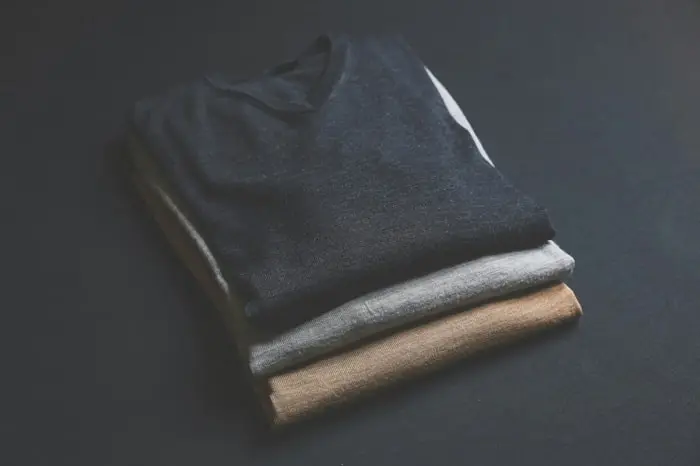
Creating designs that sell and ensuring top-notch production quality can make or break your POD clothing business. Here are essential tips to help you stand out:
- Research Trending Styles
Stay on top of fashion trends, seasonal colors, and popular themes. Tools like Pinterest Trends and Google Trends can help you identify what’s hot before your competitors do. - Focus on a Cohesive Brand Aesthetic
Make sure all your designs share a consistent style – whether it’s minimal, bold, vintage, or quirky – so customers instantly recognize your work. - Prioritize Print Quality
Try ordering samples or at least carefully reading reviews (if you’re on a tight budget) before launching products. That will ensure your colors, fabric feel, and print durability meet expectations. - Use High-Quality Mockups
Professional mockups increase trust and help customers visualize how your apparel will look in real life. Canva and Placeit offer budget-friendly options. - Optimize for Production Efficiency
Keep designs in the right format and resolution (usually 300 DPI in PNG with transparent background) to speed up uploads and avoid production delays. - Test Small Before Scaling
Release a limited number of designs first. Analyze sales and customer feedback, then scale up with proven winners. - Balance Creativity with Market Demand
Don’t just design what you like – design what sells. Mix passion with data from keyword research and trend analysis.
Print-on-Demand Clothing Brand: Pricing & Profit
Pricing your POD clothing right is key to ensuring you cover costs, attract buyers, and still make a great profit. Unlike traditional retail, POD comes with unique costs such as base product price, printing fees, and platform charges – so careful calculation is essential.
Here are some tips to help you get it right:
1. Know Your Base Costs
Before setting prices, understand exactly what each product costs you. This includes the base product price from Printful, printing fees, and shipping costs. Knowing this number is your foundation for profitable pricing.
2. Factor in Marketplace or Store Fees
If you’re selling on Etsy, factor in listing fees ($0.20 per product) plus transaction and payment processing fees. On WooCommerce, remember to account for hosting, payment gateway fees, and any premium plugins you use. These costs eat into your profit if ignored.
3. Use a Clear Profit Margin Formula
A common formula:
Retail Price = (Base Cost + Fees) ÷ (1 – Desired Profit Margin)
For example, if your product and fees total $20 and you want a 40% margin, your retail price should be around $33.
4. Research Competitor Pricing
Check similar products in your niche to ensure you’re competitive. If your price is higher, justify it with better design, quality, or branding. Underpricing can hurt perceived value and profit potential.
5. Offer Free Shipping Smartly
Consumers love free shipping, but factor it into your pricing so you’re not absorbing the cost. Many POD sellers simply add the average shipping fee to the product price to keep margins intact.
6. Create Tiered Pricing
Offer different price points for different products – basic designs at a lower price, premium or limited-edition designs at a higher price. This increases your average order value.
7. Regularly Review and Adjust Prices
POD base costs can change over time. Review your pricing every few months to ensure your profit margins are still healthy and aligned with market demand.
Sustainable Print-on-Demand Fashion: Printful & Sustainability
Sustainability isn’t just a trend – it’s quickly becoming a core value for modern fashion brands. In the print-on-demand space, Printful is making significant strides toward eco-conscious production, giving small business owners a way to offer greener products without massive upfront investments.
Printful only creates products once an order is placed and delivers over 85% of them within the region where they’re fulfilled.
That means overproduction is greatly reduced, and strategically-located fulfillment centers lead to lower CO₂ emissions when transporting Printful orders.
If you want to align your POD clothing brand with sustainability, here are some tips for your eco-friendly POD clothing shop:
1. Choose Eco-Friendly Products
Printful offers a range of apparel made from organic cotton, recycled polyester, and other sustainable materials. Opting for these options not only lowers your environmental footprint but also appeals to eco-conscious customers.
2. Adopt a Made-to-Order Model
The beauty of POD is that items are produced only when ordered – helping to reduce overproduction and textile waste. This is a major sustainability advantage compared to traditional mass manufacturing.
3. Source Responsibly
Printful works with suppliers that follow strict environmental and ethical guidelines. When listing your products, highlight these sourcing practices to build trust and differentiate your brand.
4. Reduce Packaging Waste
Choose Printful’s eco-friendly packaging options, such as post-consumer recycled mailers. Avoid excess packaging materials and keep your shipping process minimal yet secure.
5. Educate Your Customers
Share details about your sustainable products in your product descriptions and marketing. Explain how organic cotton uses less water or how recycled fabrics keep plastic out of landfills. Consumers are more likely to buy when they understand the impact.
6. Leverage Local Fulfillment
Printful has multiple fulfillment centers worldwide, which allows orders to be shipped from the closest location to the customer. This helps reduce shipping distances and the associated carbon footprint.
7. Support Circular Fashion
Encourage customers to donate, repurpose, or recycle clothing they no longer wear. Even as a POD brand, you can promote longevity and responsible fashion habits.
Best Print-on-Demand Clothing Brand Ideas: Niche Apparel Store Ideas
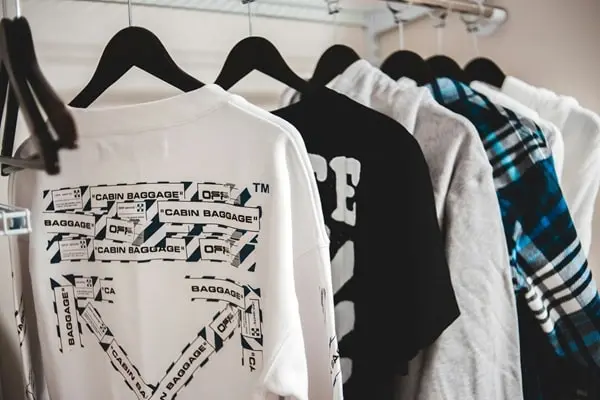
- Dog breed-specific apparel – Taps into passionate pet owner communities who love showing breed pride.
- Yoga & mindfulness clothing – Appeals to a growing wellness market with lifestyle-driven designs.
- Gamer-themed streetwear – Connects with a massive online gaming audience eager for fandom merch.
- Outdoor adventure gear – Targets hikers, campers, and nature lovers who value functional and stylish wear.
- Vintage-inspired graphic tees – Leverage the ongoing retro fashion trend with timeless appeal.
- Funny work-from-home loungewear – Caters to remote workers looking for comfort and humor.
- Cause-driven clothing – Supports social or environmental causes, attracting value-driven buyers.
- Minimalist monochrome fashion – Appeals to the minimalist lifestyle movement with simple, sleek designs.
- K-pop fan merch – Capitalizes on dedicated fandoms with niche music-inspired designs.
- Astrology & zodiac apparel – Attracts customers interested in personalized, star-sign-themed fashion.
How to Succeed with Print on Demand
Building a successful print-on-demand clothing brand isn’t about luck – it’s about strategy, consistency, and creativity. The beauty of a print-on-demand business from home is that you can start small, test ideas without big upfront costs, and scale at your own pace. Focus on finding a niche you care about, producing high-quality designs, and marketing with intention. Combine this with smart pricing, stellar customer service, and staying on top of trends, and you’ll set yourself apart from the competition.
Remember, this is a long game. The more you refine your products and brand voice, the more loyal your audience will become.
Ready to Take Your Next Step?
Open your self-hosted WooCommerce store with DreamHost and connect it to Printful for free. You’ll have full control of your brand, plus the option to add a blog to grow your traffic with SEO and content marketing. With modern AI Website Builder tools, you can get your online store ready to launch today!
Print-on-Demand Clothing Brands FAQs
Yes. WooCommerce integrates seamlessly with print-on-demand providers like Printful and Printify. This allows you to sell custom products directly from your WordPress site without holding inventory, making it ideal for a budget-friendly print-on-demand clothing brand.
Yes. Printful offers a direct integration with WooCommerce, enabling automatic product syncing, order fulfillment, and inventory updates. Once connected, your orders are sent to Printful for printing and shipping without manual input.
You can start with no upfront costs by connecting Printful to a free or low-cost platform, creating your designs in free tools like Canva, and only paying for products after customers place orders. Printful is free to use – you only pay for the item and shipping when you sell.
For a print on demand business, you need a niche and target audience, a store platform (WooCommerce, Ecwid, or Etsy), a POD supplier like Printful, design tools (Canva, Photoshop, or AI design tools), and marketing strategies such as social media, SEO, or influencer outreach.
Yes. Many successful clothing brands started as print-on-demand businesses from home. It’s a low-risk way to test designs, build a following, and scale into a full brand without large upfront costs.
Absolutely. Print-on-demand is beginner-friendly because it requires no inventory, has minimal startup costs, and offers automated fulfillment. You can focus on creating designs and marketing your store.
Yes. Printful integrates with most major ecommerce platforms, including WooCommerce, Shopify, Wix, and Squarespace. You can also use its API to connect a custom-built website.
Yes. The print-on-demand market was valued at $10.2 billion in 2024 and is projected to grow at a 26% CAGR. Profitability depends on your niche, pricing strategy, and marketing efforts.
Yes, in most cases. You can open a store on platforms like Etsy with no monthly fees and connect it to Printful for free. You only pay for products after you make a sale, making it a low-risk business model.



